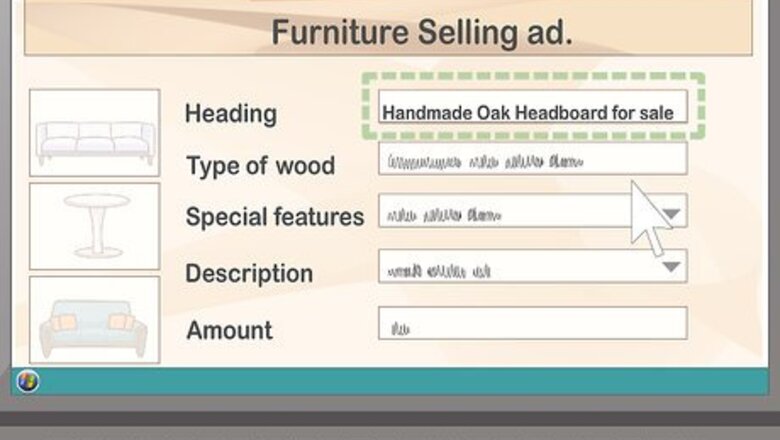
views
Selling Your Furniture Online
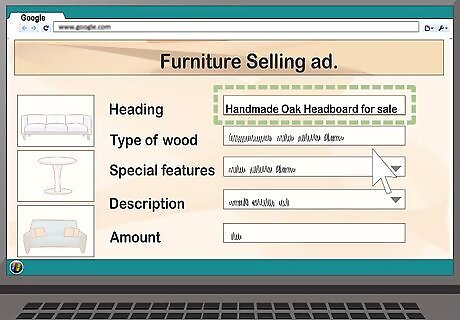
Create a listing for each piece. Write a short description of the piece you're trying to sell, mentioning any special features, such as elaborate handmade trim and the type of wood you used. Make sure to include your contact information as well. Write a concise headline. Online classifieds tend to do better when they’re short, so grab the reader’s attention right away. Try a headline like “Handmade Oak Headboard for Sale” or something similar.
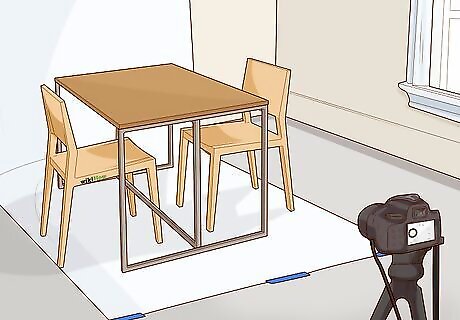
Take photographs of your work in natural lighting from different angles. You will need good pictures of your furniture to display online, as well as to bring with you to craft shows. Natural lighting looks best, so if your furniture is in a shop, try opening the doors and windows to get as much sunlight as possible. Try taking a few photos from straight on, as well as some from side angles and a few close-ups of details.

Advertise in online classifieds to reach a local audience. Online classifieds are a great way to generate customers for free, but they may only reach a limited audience. Post new ads about once a week so they don't get buried beneath pages of newer listings. Try using sites like Craigslist. You can also post your classified ad in local newspapers by calling the number listed in the classified section.
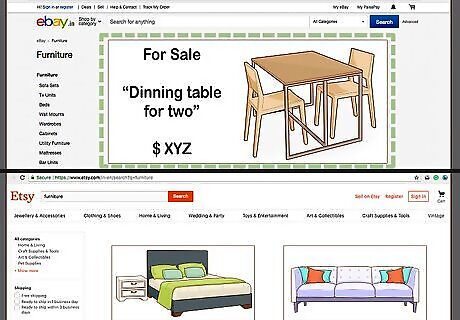
List your furniture on a vendor or auction site to gain new customers. Selling your furniture through one of these sites can help you reach customers who might never have otherwise seen your work. Read customer reviews to find out the pros and cons of different sites, and choose the ones which seem most reputable. Many of these sites charge a commission, although the buyer is usually responsible for shipping. Popular sites for selling online include eBay and Etsy.
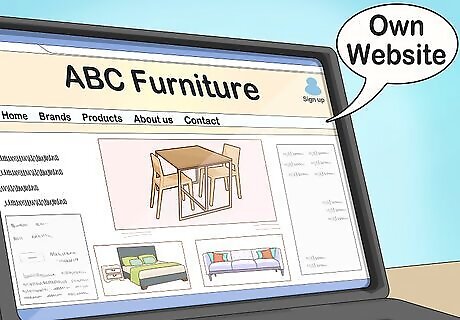
Make your own website or blog for more independence selling online. If you want to build an online following, you can build your own merchant website or start a blog. Posting the progress of different pieces can be a powerful selling tool. Find a web host, design the appearance of your site, and list the furniture you're trying to sell. Even if you don’t know much about technology, there are companies that provide easy-to-use templates to build a website with plugins that allow customers to shop right from your site. Check your site regularly on both a computer and a mobile device, like your phone, to make sure the site is optimized for different sized screens.
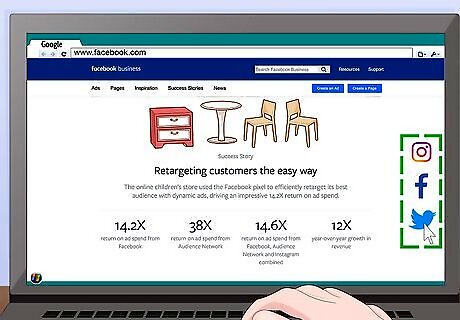
Post furniture ads on social media to build a following. Create accounts on various social media channels to reach out to new customers while engaging with existing ones. Ask your friends and followers to repost your ads in order to reach a wider audience. Some sites allow you to pay to sponsor your ads so more people will see them. You can use sites like YouTube, Facebook, Instagram, and Twitter.
Selling in Person
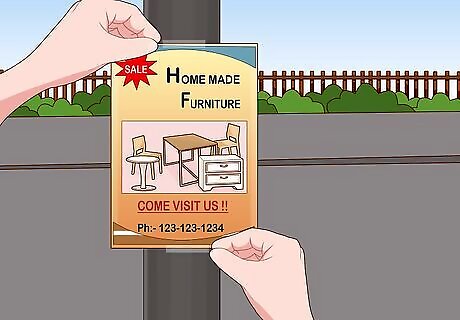
Put up leaflets around your area to get local customers. Don’t be afraid to get creative with your marketing approach, especially when you’re first starting. Create leaflets advertising your business on your computer, then print them out and pin them to bulletin boards in your local grocery stores, the library, and other public areas. On the flyer, list any websites, social media, or other online listings where you promote your work, as well as a phone number where potential customers can contact you. Photocopied pictures don’t often translate well, so focus on crafting strong copy emphasizing the quality of your work, the types of pieces you create, and any other information which distinguishes you from your competition.
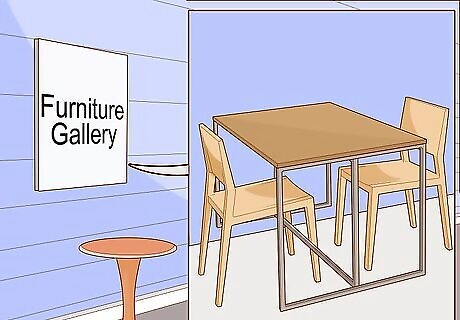
Participate in a cooperative gallery to showcase your work. Cooperative galleries are a shared space for artists and craftsmen. Look online to find a list of co-ops near you, then contact a representative of the gallery to see if they have any space available. If so, select a few of your favorite pieces to show off your work. By showing your furniture at a co-op, you will have the benefit of shared marketing, business assistance, and pooled customers. You may also have a catalog where you can list your work. Some cooperative galleries require their members to invest in the gallery, to pay fees or annual dues, or to help staff the gallery. If there’s not an artists’ co-op near you, check nearby big cities. It may be worth a commute in order to access a larger customer base.
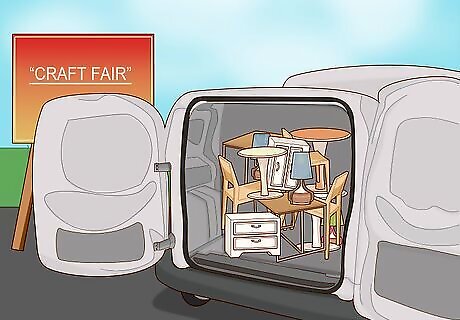
Bring smaller pieces if you attend a craft fair or flea market. Craft fairs and flea markets are a great way to introduce your work to a new audience. Since it’s not practical to move larger pieces of furniture back and forth, bring some smaller work, like end tables, handmade chairs, and other accent furniture. Other pieces you might want to bring could include barstools, small bookshelves, toy boxes, and cabinets. You can find upcoming craft fairs in your area by looking online, talking to other vendors in your area, or looking for flyers around town.

Set up your booth with a table, chairs, and flyers or business cards. Whether you're attending a craft fair or you're setting up a booth at a cooperative gallery, you can make your space look more professional with a table and chairs, especially if you made them yourself. Decorate your booth with signs and the furniture you have brought, and have promotional literature available to hand out to people who stop by your booth to see your work. Bring pictures of your larger furniture to decorate your booth to give customers a sense of the work that you do.

Be friendly to the people who approach you about your work. Customer service will go a long way towards helping you to sell your handmade goods. Keep in mind that you are the face of your business, and try to be open and friendly when you meet potential buyers. Customers who aren’t familiar with buying handmade goods may be surprised at the cost of quality woodwork. Be willing to educate them on what goes into a piece so they can appreciate the value of it. Try to have a variety of styles of furniture in different price ranges available for customers.
Pricing Your Furniture
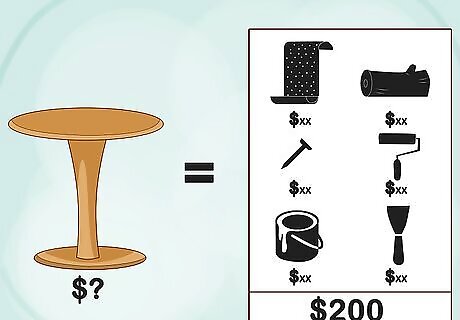
Start with the cost of the supplies that went into the furniture. Keep track of what you spend every time you purchase wood, primer, paint, or any other materials you use when you are building the furniture. Other supplies you might include in your costs include wood stripper, putty, sandpaper, and nails. Factor in the cost and depreciation of your tools as well. While you don’t want to charge a customer because you bought a new saw, you should into account that your tools are a part of your business and will have to eventually be replaced. The cost of materials to make a dining table may be around $200, for instance.
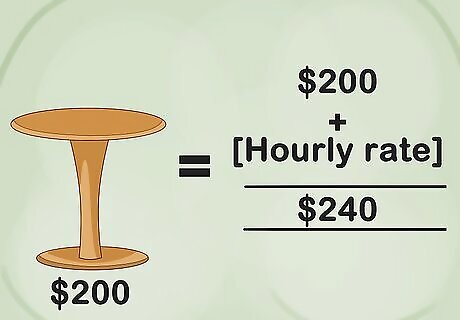
Determine your hourly rate and add it to the cost of materials. Even if you genuinely enjoy building handmade furniture, it is a time-consuming pursuit, and you should expect to be compensated for your craft—don’t undervalue the work you’ve done! Keep track of the hours you spend on a piece, then decide how much you feel your time is worth. If you’re not sure where to start, try basing your hourly fee on your area’s minimum wage. This is $7.25 in most areas of the United States. Woodworkers often charge much higher than minimum wage for their time, with rates averaging about $15 an hour. If it took you 4 hours to make the table, and you've decided to charge $10 an hour, you would add $40 to the cost of the materials and supplies used to build the table, bringing the cost to $240.
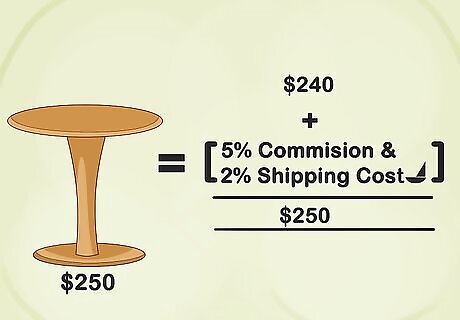
Add the cost of any commissions or shipping to the total. If you sell your work through a co-op or an online vendor, you may have to pay a commission. If so, you may want to include the cost of the commission in your final cost so the fee is absorbed by the buyer. Keep in mind that raising your price too high can sometimes mean you will have to wait longer to find the perfect buyer. If you need to move your furniture more quickly, you may want to pay the commission yourself. If your site charges a 5% commission, for instance, and you want to pass that commission on to the consumer, you would add $12 to the materials, supplies, and hourly rate already figured into the cost of your table, making the total $252. You could round this to $250 to make it an even number.
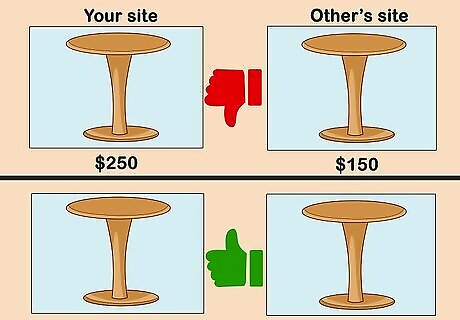
Compare the prices of other furniture being sold locally. Check classifieds, look online, and talk to other vendors to get an idea of the market in your area. This will help you determine whether your piece is likely to sell at the price point you chose. For instance, if dining tables in your area average around $150, you might have trouble selling your piece for $250, but if they average around $400, you should sell your table easily. You might even consider raising your price or recalculating your hourly rate if you consistently find that you are under-pricing your furniture.

















Comments
0 comment